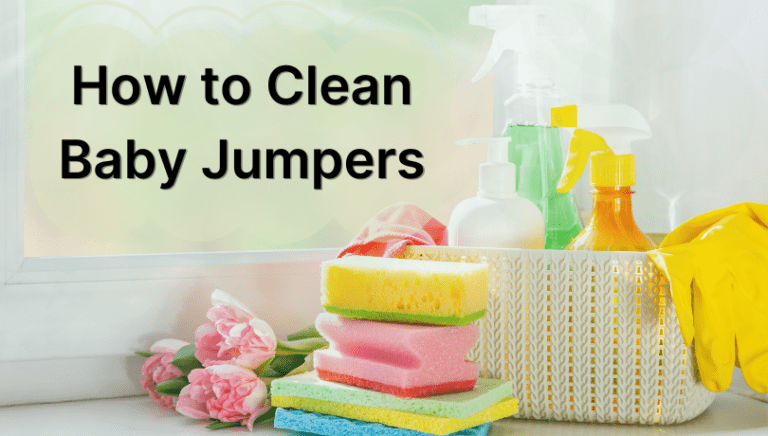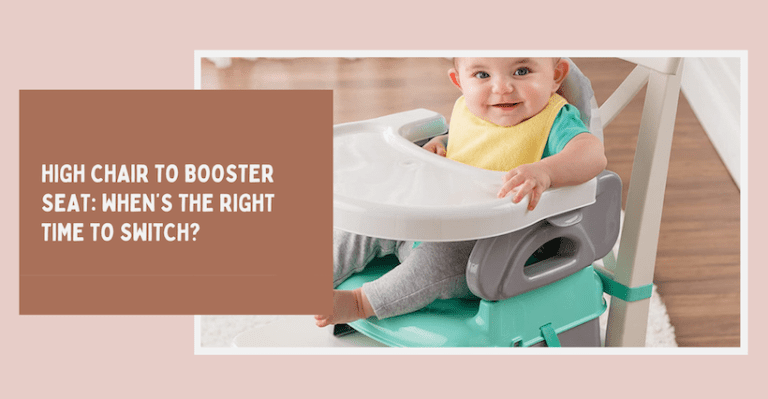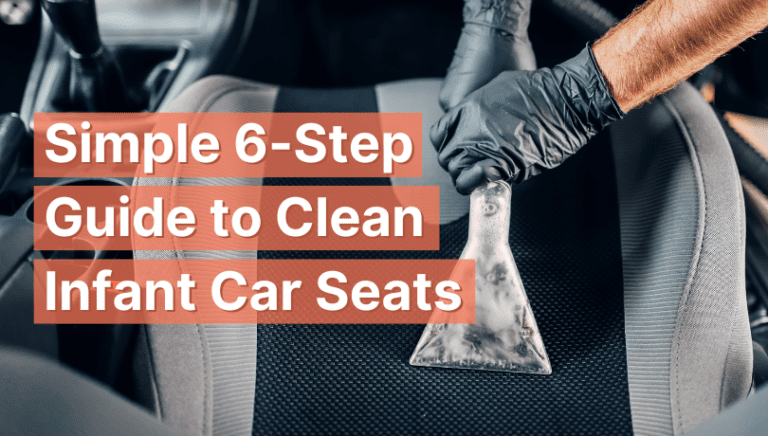Infant Car Seat Crash Test Ratings You Need to Know
Getting your first infant car seat can be tricky, especially because the safety standards for these car seats evolve as road safety measures get more intense.
Being a mom of six, I thought it’d be easier to choose an infant car seat for my youngest, but I was just as confused as a new mom! That’s why I tried to answer all your questions about infant car seat crash test ratings here.
Understanding how the test and ratings work can simplify the purchase process. I’ve also listed down 5 of the safest car seats you can buy and what you should look for when you are purchasing one for your family.
Table of Contents

Infant Car Seat Crash Test Ratings Explained
Recently, I had a chat with a Child Passenger Safety Technician, and here’s what I found out about the safety ratings:
- While there are no standardized safety ratings for infant car seats in the USA, the manufacturers must test for and meet particular Federal standards.
- The National Highway and Traffic Safety Administration can enforce these standards and recall the ones that don’t meet them.
How Are Infant Car Seats Crash-Tested?
Crash testing is a pretty vigorous safety test. Since the car seat is mounted on rails or a sled, it is also called a sled test.
- Firstly, they secure a crash test dummy into the car seat. Then, the car seat is properly installed on the sled.
- After the installation, the test bench or sled is accelerated or decelerated at different speeds to simulate a 30-mph frontal impact.
- According to the US Department of NHTSA, the car seats must meet the performance criteria in the frontal impact simulation.
- This also includes a side impact test where the car seat goes through a 30-mpg side collision.
The dummy isn’t a mere prop during the crash, sled, or dynamic test. It has sensors that pick up and record particular values during the crash. Based on these values, the manufacturers can rate the car seat on different criteria such as safety, ease of use, durability, etc.
Who Tests The Car Seats?
Both the NHTSA (National Highway and Traffic Safety Administration) and IIHS (Insurance Institute for Highway Safety) are responsible for testing the car seats and awarding safety ratings.

- In the US, manufacturers run tests at various stages of production, but the NHTSA crash test is essential for each car seat to be approved for the market. The NHTSA also continuously updates its testing criteria and standards to ensure optimum safety.
- When it comes to the IIHS, the insurance industry funds it, and it is a non-profit agency that focuses on research to reduce the rate of death, injury, and damage from vehicle crashes. They even invented the small front crash test to measure the impact of a collision between a vehicle and a tree or a pole.
You can also visit NHTSA’s website to check if your car seat or similar equipment has been recalled. This way, you can be sure you are following guidelines and keeping your little ones safe.
How Has The Crash Test Evolved Over The Years?
Crash or dynamic testing was developed in 1970, and during this short time, the test and safety ratings have evolved significantly. Let’s look at the highlights of how it has evolved:
| Year | Development |
|---|---|
| 1971 | NHTSA introduced the first-ever Federal safety standard for infant car seats. |
| 1978 | Tennessee passed the first-ever child passenger safety law – parents were required to put their little ones in a child restraint system or safety seats. |
| 1981 | The Federal government improved safety standards – car beds, rear-facing restraints for infants, and forward-facing seats for kids under 50 lbs were mandated. |
| 1984 | The Child Restraint Task Force of the Society of Automotive Engineers adopted the initiative to create safe car designs to fit child restraints, belts, and vehicle seats together. |
| 1986 | NHTSA found that child restraints can reduce 71% of fatalities and 67% of severe injuries. However, misuse can reduce their effectiveness by 44%. |
| 1990 | Society of Automotive Engineers’ task force made new recommendations on child restraints, seat belt design, and vehicle seats. |
| 1996 | The airbag requirement gets amended by the NHTSA, which includes additional warning labels and cut-off switches for vehicles without smart airbags. |
| 1998 | Dana’s Bill is passed and says that states will receive $30 million for technical training, safety inspection, and child safety restraints or car seat distribution for four years. |
| 2000 | Washington and California passed the first law regarding booster seats for children over 40 lbs. (Took effect in 2002) |
| 2002 | Anton’s Law requiring the standards for booster seat testing was passed. |
| Current | The latest infant car seat requirements include a 5-point safety harness, LATCH system, snug fit for the child and safe restraints. |
Top 5 Safest Infant Car Seats

1. Best Overall: Clek Liing
The Clek Liing offers features like side-impact protection, EPP foam, and a two-stage insert support system, making it perfect for newborns and preemies.
- Though the Clek Liing is pricey, it has a 9-year expiration date.
- The seat’s base includes Clek’s Rigid-LATCH system and a seatbelt tensioning system, allowing you to position your baby in the middle seat.
- The new FMVSS213-compliant.
- Newborn support system.
- Easy and safe LATCH system.
- Adjustable load leg with energy absorbent tech reducing crash force by 40%.
- Expensive.
- Extremely difficult to loosen the straps.
2. Best Comfort: GRACO SnugRide 35 Lite LX
The SnugRide 35 Lite LX is available for under $350 on Amazon if your goal is to find a high crash test rating car seat on a low budget.
- With a 7-year expiration date, you can use this car seat as a rear-facing only seat for your infant till they’re 35 lbs.
- It’s easy to carry and has an adjustable base and level indicator to ensure it’s installed correctly.
- Easy installation with LATCH or belt.
- High crash test rating.
- Federally approved for use in the US.
- Certified to be used in aircraft.
- Lack of padding.
- Difficult to remove the seat from the base.
3. Best Quality: UPPAbaby Mesa Max
The UPPAbaby Mesa Max has the added load leg and a SmartSecure system with a visual indicator. The light won’t turn green until the seat is locked safely in its place using the LATCH system.
- Its padding and spacious sun canopy are crafted from fabric and foam free from fire-retardant chemicals.
- But you might want to keep a lint roller handy to keep the seat looking neat.
- Has a SmartSecure System.
- Included base with a load leg.
- Adjustable headrest for side impact protection.
- Anti-rebound panel.
- Not suitable for strollers from other brands or travel strollers.
- The headrest can slide up/down when traveling or storing.
- Expensive and tough to install.
4. Best Budget Convertible: Graco Extend2Fit 3 in 1
The Graco Extend2Fit is a convertible that grows with your baby, unlike infant car seats.
- Plus, it has a higher weight limit for the rear-facing position, going up to 50 lbs.
- With extended legroom of 5 inches, your babies are safe and comfy in the rear-facing seat.
- High crash test analysis score.
- 4-position extension panel for extra legroom.
- Rear-facing seat up to 50 lbs.
- Poor back support with an inward curve.
- Difficult to adjust the straps.
5. Best Adjustable: Chicco Keyfit 35
The Chicco Keyfit 35 scores better in crash test analyses than many competitors. Plus, its LATCH installation system with SuperCinch tech makes installing the base a breeze.
- It is also compatible with most top-rated strollers.
- With its adjustable headrest and cozy infant insert, your tiny bean will be snug and supported by up to 35 lbs.
- High crash test rating.
- Anti-rebound bar.
- No-rethread harness.
- Easiest LATCH connectors.
- Limited weight range for a rear-facing seat.
- Quite heavy (10 lbs).
- Can make your infant sweaty because of the non-breathable seat material.
What To Look For In An Infant Car Seat
- Choose For Your Child’s Needs: Don’t just go for the best-rated or the most expensive car seat. Choose one based on your child’s weight and size. Avoid relying on age limits, since babies grow at their own pace.
- Compatibility with Baby Gear: Ensure compatibility with other baby gears, like their stroller. Some infant car seats are compatible with all strollers, whereas the UPPAbaby ones aren’t compatible with any other brands.
- Lightweight: Carrying your little bean around won’t be convenient if your car seat is too heavy. Look for a seat you can carry easily with your baby inside.
- Easy Maintenance: Babies are messy. If you’re a mom, you know! So, pick out a car seat that will be easier to clean. I always like removable and machine-washable covers for baby devices.
- Limit Motion: Check for motion-limiting features to ensure optimum safety; for instance, load leg, rear-facing tether, or an anti-rebound bar.
- Standards: Refer to the state laws to find the necessary standards you must comply with, such as federally approved seats.
Recommended Reading: When is My Baby Too Big For The Infant Car Seat?
Keep Yourself Updated!

As parents, we also need to stay updated on infant car seat laws and regulations in our state and beyond. Because, as we face more accidents and challenges on the road, regulations can change.
If you have a growing family like mine, it’s a good idea to regularly check infant car seat ratings, safety standards, where to place infant car seats for maximum safety, and crash test guidelines. That way, you’ll be ready to keep your little one safe!
Conclusion: Infant Safety On The Road
There are many factors to consider before you choose a car seat for your little one. Starting from the average infant car seat weight, your little one’s growth, safety, crash test results, and the constantly evolving car seat laws.
The infant car seat ratings can help make this decision. Why? Because it focuses on crash test results and the ease of use, durability, expiration date, and compatibility with other devices.
So, be vigilant about your choice and stay informed about your state’s laws and regulations.






